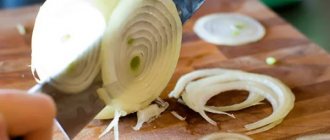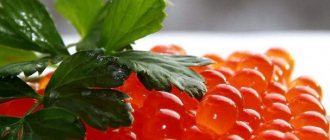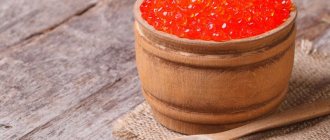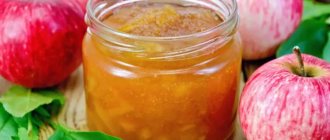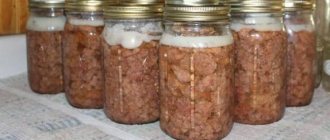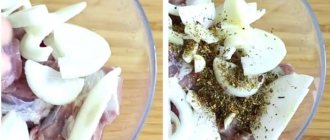4.2 / 5 ( 4 voices)
Hello, friends!
Today we will look into a seemingly common question. I suggest salting the lard so that everything turns out great. To make it extraordinarily tasty, and of course soft, it’s also important. To do this, you need to know some nuances and tricks that will easily give you the desired effect. Do you think this is impossible to do at home? You are wrong.
We will figure it out and experiment, because there are many recipes, and each one will suit their own. For example, I like it dry salted, but my mother likes it in brine. In general, our dad prefers to eat lard with a certain smoky flavor, which can be obtained by cooking it in onion skins.
How do you usually salt? Write your comments below the article.
I would like to note right away that it is better to take lard from the abdominal cavity or back, and so that there are layers of meat. And of course, if it is grown by farmers or a grandmother in the village, that is, your own homemade one, you will not find a tastier option for pickling. Because it will be without chemical additives and other nonsense and preservatives. And the skin will be soft and delicate, and also very thin, which will undoubtedly please you.
How to choose lard
To choose the right lard, it is better to go to the market or farm store.
First of all, pay attention to the color: it should be white or pinkish, but always uniform. The skin of the lard should be thin, smooth, without bristles and preferably with a veterinarian's mark. Smell the lard. The smell of fresh product is subtle, sweetish and milky. The presence of a specific aroma indicates that the lard came from a boar. No amount of spices can remove the smell, so it’s better to refuse the purchase.
Pierce the lard with a knife, fork or match. If it pierces easily or with little resistance, the product deserves your approval.
After purchasing the lard, rinse it with running water, dry it well with a towel and begin the cooking process.
The right choice of lard for salting is the key to culinary success!
First, we go to the market and select shmat according to the following criteria:
- the piece should be thick, at least 5 cm thick, then it will be soft and elastic;
- meat layer is tasty, but such an appetizer cannot be stored for a long time;
- there should be no loose areas between the greasy part and the meat layer;
- color indicates freshness; it should be uniformly light, slightly pinkish, and in no case yellow;
- the skin is thin, smooth, without bristles;
- smell - sweetish milky;
- Smooth and even-looking lard should be elastic to the touch.
You should not purchase thin pieces, less than 4 cm thick, fresh lard with a grayish hue, and tenderloins from the abdominal cavity. These will not make delicious homemade bacon! The most tender delicacy comes from the back or sides of a young pig, while hog lard is a little stringy and tougher.
Read also Who loves animal cabbage
To the question of an inexperienced cook - which lard is best to salt, we will answer a little later. The main criteria are freshness, thickness and the absence of loose parts that make it tough, similar to chewing gum. Which lard is best salted dry? Of course, corresponding to the above parameters, as with other methods of salting. Now about salt, because the quality and taste of the finished product depends on its type. When dry salting lard, iodized or fine Extra salt should not be used. The most suitable pickling salt is coarsely ground, intended for this type of food processing. Is it possible to salt lard in brine made from fine or iodized salt? Fine - yes, iodized - under no circumstances. Iodized salt is used only for cooking; it is not suitable for preparing salted foods or for canning. But we will tell you in another article how much salt is needed per 1 liter of water for salting lard in brine. Try cooking bacon at home using different recipes to choose the most suitable one for yourself and your household.
How to salt lard
At home, lard can be salted in three main ways:
- Just rub with salt. In the classic version, garlic and pepper are also added, which give the dish a spicy taste and aroma. Dry cooking is quick and easy. It is suitable for those who do not like to spend a lot of time in the kitchen. But it is worth remembering that such lard can be stored for no more than a month.
- Place in brine . This is a more labor-intensive process: first, the brine is boiled, then lard is soaked in it, and then stuffed with spices. But the work will pay off in full: the product turns out to be very delicate and can be stored for about a year.
- Cook . Use this method if you doubt the quality of the product. Cooking will help get rid of most parasites and bacteria. In addition, such lard will turn out to be very soft and will be stored for up to six months. And if you cook it with onion skins, it will taste like smoked meat.
By the way, no matter what method you choose, you will need to store the finished lard in the freezer.
Is it possible to pickle mushrooms in plastic containers?
To ensure a long shelf life for mushrooms, you should take care of the container in which you salt the mushrooms. Often during the harvesting season, all suitable buckets and pans are occupied with something. Experienced housewives know that mushrooms and vegetables need to be salted in wooden, glass or enamel containers. But sometimes only plastic is left on the farm. Is it possible to pickle mushrooms in it?
You should not prepare pickles in plastic containers. Salt has a destructive effect on plastic, causing the material to release toxic substances that penetrate the food. But if this is the only vessel that is currently available for pickling, carefully inspect it and prepare it thoroughly.
How to prepare plastic containers
The first thing you need to look for on plastic utensils when inspecting them is a special symbol that shows a fork and a glass. This sign indicates that the container is suitable for storing food.
Plastic utensils may also have additional symbols indicating the specific purposes for which they can be used:
- a plate with a shower that waters it - dishwasher safe;
- snowflakes - suitable for freezing food in it;
- oven with waves - suitable for heating food in the microwave.
- PET – polyethylene terephthalate;
- HDP - high-strength polyethylene;
- PVC – polyvinyl chloride;
- LDP - low density polyethylene;
- PP - polypropylene;
- PS - polystyrene.
PVL, PP, PS and PET are plastics suitable for food storage. The remaining markings mark plastic that is used in construction, industry, and intended for other household purposes.
How to pickle lard with garlic
Photo: Lifehacker
Ingredients
Photo: Lifehacker
- 1 kg of lard;
- 200 g salt;
- 20 g ground black pepper;
- ½ head of garlic.
Preparation
Cut the lard into cubes 4–5 cm wide.
Photo: Lifehacker
Make cross cuts in each block. The depth is slightly more than the middle of the piece.
Photo: Lifehacker
Pour all the salt into a deep container and rub the lard well on all sides.
Photo: Lifehacker
Sprinkle pepper on top. If desired, you can use a mixture of red and black.
Photo: Lifehacker
Peel and cut the garlic into slices 1-2 mm thick and place them in the slits on the pieces of lard.
Photo: Lifehacker
Photo: Lifehacker
Transfer the lard to a container, cover and refrigerate for 3-4 days.
Photo: Lifehacker
Photo: Lifehacker
The lard is ready. It tastes best with black bread.
For further storage, scrape off or rinse off excess salt, wrap the lard in a cloth, place in a bag, and then in the freezer.
Save to bookmarks

